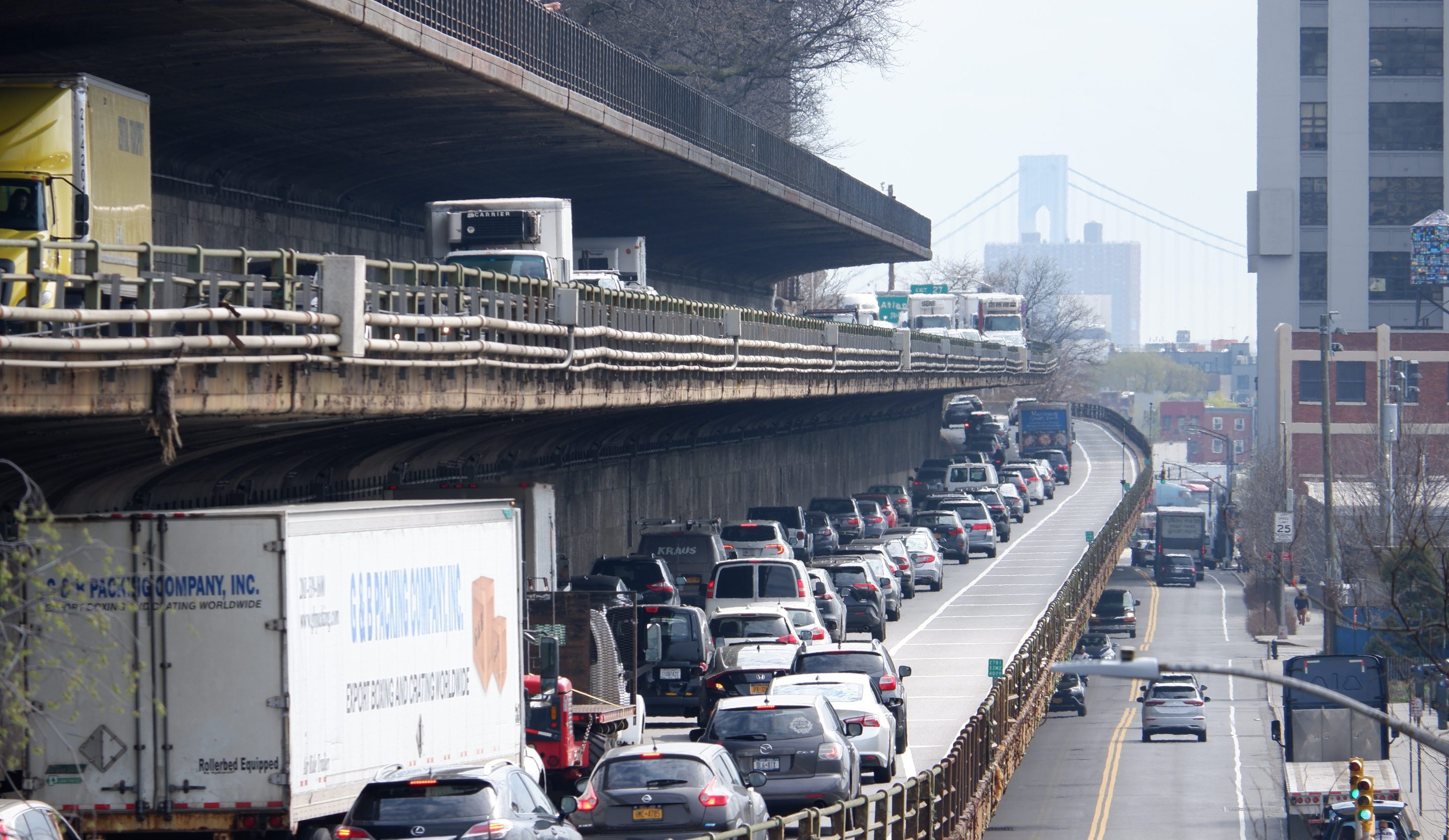They want to look to the future, not the past.
Mayor Adams should scrap his "car- and truck-centric" plan for the Brooklyn-Queens Expressway in favor of one that aims to get New Yorkers out of cars and onto transit, a coalition of civic groups said this week.
“We want to state unequivocally that the concepts, designs, and indeed the overall car- and truck-centric approach to this work do not meet the expectations or needs of the impacted communities nor the warming planet,” more than a dozen community groups said in an Aug. 14 letter to city and state officials.
The city Department of Transportation last month unveiled three different concepts for the BQE's treacherous Atlantic Avenue interchange — two of which would add a new highway off-ramp on Hicks Street, just south of Atlantic, that the letter called "extremely misguided." Those proposals followed three other concepts floated earlier this year for the beleaguered triple-cantilever section of the BQE, all of which would restore three lanes of traffic in each direction.
The letter to Mayor Adams, Deputy Mayor Meera Joshi, and DOT Commissioner Ydanis Rodriguez was signed by the Brooklyn Heights and Cobble Hill associations, Transportation Alternatives, El Puente, and Open Plans, which shares a parent organization with Streetsblog.
In their letter, the groups called on the city and state to create a new, "multi-stakeholder," governing body that “has the authority and vision to manage the necessary planning” and follow a slate of four recommendations, including:
- Take immediate action to prolong the life of the BQE’s triple cantilever for at least 20 years through waterproofing, replacement, and repairs — a plan initially proposed by former Mayor de Blasio
- Acknowledge that any long-term BQE planning must be part of a corridor-wide transformation, which so far the state has refused to do
- Immediately begin implementation of strategies to reduce traffic near the highway. Streetsblog reported months ago that the city failed to adopt key recommendations by its own appointed experts to curb congestion after it reduced the highway from six to four lanes
- Secure federal funding to improve public transportation to get people out of private cars and into mass transit
The schemes currently under the city's consideration have received an icy reception from locals, with pols and former DOT officials warning that the proposed new ramps would put traffic on residential streets, that the plans would impact Brooklyn Bridge park, and that nothing in the city's vision would reduce the highway's footprint or the number of vehicles that use it daily.
Former DOT Commissioner Hank Gutman, a Brooklyn Heights resident, has said the agency's proposals "don't improve safety, they don't improve traffic, and they certainly don't improve any of the surrounding communities."
Even DOT has conceded the concepts have “trade-offs." The agency pledged to keep working on its plans for the BQE interchange, as well as safety upgrades for the larger, and deadly, Atlantic Avenue corridor, after receiving “clear feedback” from the community, Streetsblog reported late last month.
Brooklyn Heights Assembly Member Jo Anne Simon, who introduced a bill earlier this year to create the kind of authority sought by the coalition, said she agrees that the city’s plans are “lacking.”
“We really need a different approach — I’ve been talking about a corridor-wide approach,” she said. “I’ve also said publicly a number of times that aspects of prolonging the life of the cantilever is money well spent because it buys us time — and allows people to plan more holistically.”
Brooklyn Heights Association Executive Dorector Lara Birnback, who circulated the letter, said she has not yet heard back from the state, but has a meeting set up with Joshi next week.
A spokesperson for Gov. Hochul said the governor's office is reviewing the letter, while a rep for the DOT pushed back against the coalition's assertion that construction would encroach on Brooklyn Bridge Park.
“We will not wait decades and needlessly spend hundreds of millions of additional taxpayer dollars keeping this outdated structure as it is today,” said DOT Press Secretary Vin Barone.
“The Adams administration is seizing a once-in-a-generation opportunity to access the federal funding necessary to reimagine and rebuild a safe, resilient BQE Central with expanded green space and better neighborhood connections for pedestrians and cyclists while advancing a corridor-wide vision to address historic inequities along the highway.”






